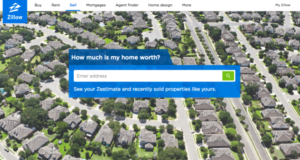What Is Zestimate?
Created by Zillow, an online real estate database company, Zestimate is the company’s home valuation model, which estimates a home’s market value based on public and user-submitted information. It considers several factors, including home features, location, and market conditions. Currently it’s the most commonly-used home valuation estimator online and, yet, has been at the center of controversy over the past couple years.
Predictions and Predicaments
Although Zillow points out that its Zestimate is not an appraisal, or an unbiased estimate of a home’s true market value determined by a qualified expert, Zillow’s proprietary tool has taken some heat for its shortcomings. From home sellers expecting to get more, home buyers expecting to pay less, and real estate professionals wishing they weren’t caught in the middle, the Zestimate has been a source of dispute for quite some time.
In fact, back in 2017, a group of homeowners in Illinois sued Zillow, alleging Zestimate’s inaccuracies made selling significantly more difficult. Ultimately, the United States Seventh Circuit of Appeals found that because the process is most accurate when “errors are not biased to favor sellers or buyers” Zillow has no obligation to change its home estimate values when they are not as high as homeowners expect.

All About Accuracy
In an effort to rebrand its image with consumers and create a more accurate tool, Zillow has just upgraded Zestimate by improving how its viability is reported. In the past, Zillow simply showed the median errors for all Zestimate values combined in an area. Three years ago, the national median error hovered at 6.7%. Back in 2018, the figure stood at 4.6%.
Nowadays, however, Zillow differentiates its median error based on whether the home is listed for sale or not. This year, the median error is only 1.9% for homes that are listed for sale and 7.7% for homes that are not listed for sale. Thus, by being more transparent about the accuracy of the Zestimate, Zillow hopes to increase consumer confidence in its tool and assuage the concerns of the company’s critics.
Picture Perfect?
Perhaps most intriguing, Zillow has a new algorithm that uses photos to help decide the appeal and worth of any home. As explained by Stan Humphries, Zillow’s chief analytics officer & economist, “We’ve taught the Zestimate to discern quality by [using] … millions of photos of homes on Zillow.” By programming the Zestimate to recognize certain visual cues as indicators of higher quality, Humphries states that, “if a kitchen has granite countertops, the Zestimate now knows that the home is likely going to sell for a little more.”
In other words, by using pictures provided by homeowners and real estate agents when a property is listed, and incorporating publicly available photos taken by a city or town assessor’s office, Zillow is transforming its Zestimate to eventually become the equivalent of a “live offer.” Of course, computer-generated photos used to stage homes have also been controversial since they are not necessarily accurately portraying the actual depiction of real estate. Zestimate’s new algorithm may be an upgrade, but it may still have credibility issues.
From The Trenches,
Roy Oppenheim
Oppenheim Law | Real Estate Attorneys
2500 Weston Rd, Suite 404
Fort Lauderdale, FL 33331
954-384-6114
https://www.oppenheimlaw.com/
Originally posted on South Florida Law Blog: Getting Zesty: Zillow’s Upgraded Zestimate https://southfloridalawblog.com/getting-zesty-zillows-upgraded-zestimate/
Tags: Real Estate, Zestimate, Zillow
















